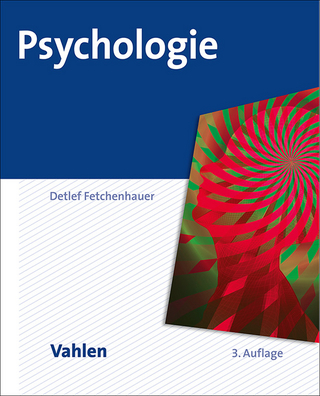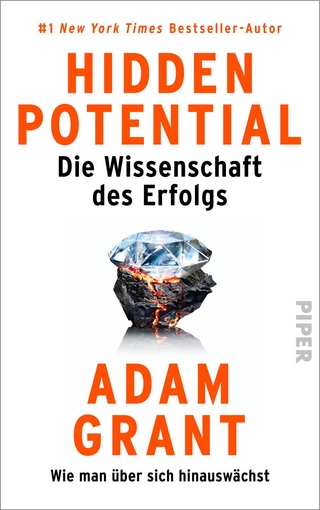
From Perception to Consciousness
Oxford University Press Inc (Verlag)
978-0-19-973433-7 (ISBN)
Anyone interested in the study of attention will have had some exposure to the work of Anne Treisman. Anne Treisman has been one of the most influential cognitive psychologists in the last 50 years. Her research and theoretical insights have influenced a variety of disciplines, including vision sciences, auditory sciences, cognitive psychology, cognitive neurosciences, philosophy, psychiatry, neuropsychology, and behavioral neurology. She is best known for her work on attention. Early in her career, much of that work involved auditory stimuli. Her later work has been primarily in the realm of visual attention. She has been especially concerned with the interactions among visual perception, attention, and memory as they relate to conscious and unconscious experience. Her Feature Integration Theory has been one of the organizing ideas in the field for three decades.
While still a graduate student at Oxford, she helped launch the modern study of attention. In the present volume, several of her most influential papers are reprinted (including some of the harder to find early work). To accompany these reprints, the editors invited experts to comment and/or to show how their own work had been shaped by Treisman's ideas and findings. The result is a scientifically rich ride through the world of ideas inspired by Treisman's work. The contributed chapters include discussions of auditory and visual attention, the role of features in selection, parallel and serial processing, and automaticity. They describe the roots and evolution of Feature Integration Theory and related models like Guided Search. They explore the interactions of attention and perception at the cognitive, neuropsychological, and biological levels. Readers can consider the critical role of binding in perception, the role of attention in scene perception, as well as the influence of cognitive load, memory, reflection, and perceptual learning on early and late processing. They will see how methods to study conscious perceptual awareness have evolved over the years.
Lynn Robertson has been studying perception and attention for over 30 years. During much of that time she focused on how perception breaks down as a result of brain injury which resulted in one authored and one co-authored book on the subject. She holds a Senior Research Career Scientist award from the Veterans Administration and is a Professor of Psychology at the University of California, Berkeley. Jeremy Wolfe has also been studying visual processing for over 30 years. His early work was concerned with binocular vision and visual aftereffects. In recent years, heavily influenced by the work of Anne Treisman, he has studied visual attention, especially visual search. Jeremy Wolfe is Professor of Ophthalmology and Radiology at Harvard Medical School and Director of the Visual Attention Lab, Brigham & Women's Hospital.
Article: Treisman, A. (1969 ). Strategies and models of selective attention. Psychological Review, 76(3), p282-299. ; Chapter 1. A research agenda for 40 years and counting: Strategies and models of selective attention (1969) ; John Duncan ; Article: Treisman, A., 1960. Contextual cues in selective listening. Quarterly Journal of Experimental Psychology, 12, 242-248. ; Article: Treisman, A., & Davies, A., 1973. Divided attention to ear and eye. In S. Kornblum (Ed.) Attention and Performance IV, Academic Press, 101-117. ; Chapter 2. Focused and Divided Attention to the Eyes and Ears: A Research Journey ; Nelson Cowan ; Article: Treisman, A. and G. Geffen (1967). "Selective attention: perception or response?" Q J Exp Psychol 19(1): 1-17. ; Chapter 3. From the Mother Lode to Load ; Nill Lavie ; Article: Treisman, A., 1962. Binocular rivalry and stereoscopic depth perception. Quarterly Journal of Experimental Psychology, 14, 23-37. ; Chapter 4. Binocular Rivalry and Stereopsis Revisited ; Randolph Blake ; Article: Treisman, A., & Gelade, G., 1980. A feature integration theory of attention. Cognitive Psychology, 12, 97-136. ; Chapter 5. Establishing the field: Treisman and Gelade (1980) ; Jeremy Wolfe ; Article: Treisman, A., & Gormican, S., 1988. Feature analysis in early vision: Evidence from search asymmetries. Psychological Review, 95, 15-48. ; Chapter 6. FIT: Foundation for an Integrative Theory ; Kyle Cave ; Article: Treisman, A., 1988. Features and objects: The Fourteenth Bartlett Memorial Lecture. Quarterly Journal of Experimental Psychology, 1988, 40A, (2) 201-237. ; Chapter 7: Some Reflections on the Processing of Perceptual Features ; Howard Egeth ; Article: Treisman, A., & Paterson, R., 1984. Emergent features, attention and object perception, Journal of Experimental Psychology: Human Perception and Performance, 10, 12-21. ; Chapter 8. Emergent Features, Gestalts, and Feature Integration Theory ; Jim Pomerantz ; Article: Treisman, A. M., & Schmidt, H. (1982). Illusory conjunctions in the perception of objects. Cognitive Psych., 14, 107-141. ; Chapter 9. At the Core of Feature Integration Theory: On Treisman and Schmidt (1982)William Prinzmetal ; William Prinzmetal ; Article: Treisman, A., Vieira, A., & Hayes, A. 1992. Automaticity and preattentive processing. American Journal of Psychology, 105, 341-362. ; Chapter 10. Perceptual Learning and Memory in Visual Search ; Marvin M. Chun ; Article: Treisman, A. & DeSchepper, B. 1996. Object tokens, attention, and visual memory. In T. Inui and J. McClelland (Eds.) Attention and Performance XVI: Information Integration in Perception and Communication, Cambridge,MA: MIT Press, 15-46. ; Chapter 11. Plasticity, Competition, and Task Effects in Object Perception ; Mary Peterson ; Article: Treisman, A. 2006. How the deployment of attention determines what we see. Visual Cognition, 14, 411-443 ; Chapter 12. Reciprocal Effects of Attention and Perception: Comments on Anne Treisman's "How the Deployment of Attention Determines What We See" ; Shaul Hochstein ; Chapter 13. Distributed Attention And Its Implication For Visual Perception ; Karla Evans and Sang Chul Chong ; Article: Robertson, L. Treisman, A., Friedman-Hill, S. & Grabowecky, M. 1997. The interaction of spatial and object pathways: Evidence from Balint's syndrome. Journal of Cognitive Neuroscience, 9, 295- 3 ; Chapter 14. Sptital Deficits and Feature Integration Theory ; Lynn Robertson ; Article: Robertson, L. Treisman, A., Friedman-Hill, S. & Grabowecky, M. 1997. The interaction of spatial and object pathways: Evidence from Balint's syndrome. Journal of Cognitive Neuroscience, 9, 295- 3 ; Chapter 15. There's binding and there's binding, or is there just binding? Neuropsychological insights from Balint's syndrome ; Glyn Humphreys ; Article: Chong, S.C. & Treisman, A. 2003. Representation of statistical properties, Vision Research, 43, 393-404 ; Chapter 16: Ensemble Perception: summarizing the scene and broadening the limits of visual processing ; Jason Haberman and David Whitney ; Article: Wheeler, M. E., & Treisman, A. M. (2002). Binding in short-term visual memory. J Exp Psychol Gen, 131(1), 48-64. ; Chapter 17: Features and Conjunctions in Visual Working Memory ; Weiwei Zhang, Jeffrey S. Johnson, Geoffrey F. Woodman, and Steven J. Luck ; Article: Musen, G. & Treisman, A., 1990. Implicit and explicit memory for visual patterns. Journal of Experimental Psychology: Learning, Memory and Cognition, 16, 127-137. ; Chapter 18. Some Thoughts on the Interaction between Perception and Reflection ; Julie A. Higgins and Marcia K. Johnson
| Reihe/Serie | Oxford Series in Visual Cognition |
|---|---|
| Zusatzinfo | 77 images with a 4-color insert |
| Verlagsort | New York |
| Sprache | englisch |
| Maße | 277 x 218 mm |
| Gewicht | 1247 g |
| Themenwelt | Geisteswissenschaften ► Psychologie ► Allgemeine Psychologie |
| Geisteswissenschaften ► Psychologie ► Verhaltenstherapie | |
| ISBN-10 | 0-19-973433-X / 019973433X |
| ISBN-13 | 978-0-19-973433-7 / 9780199734337 |
| Zustand | Neuware |
| Informationen gemäß Produktsicherheitsverordnung (GPSR) | |
| Haben Sie eine Frage zum Produkt? |
aus dem Bereich


